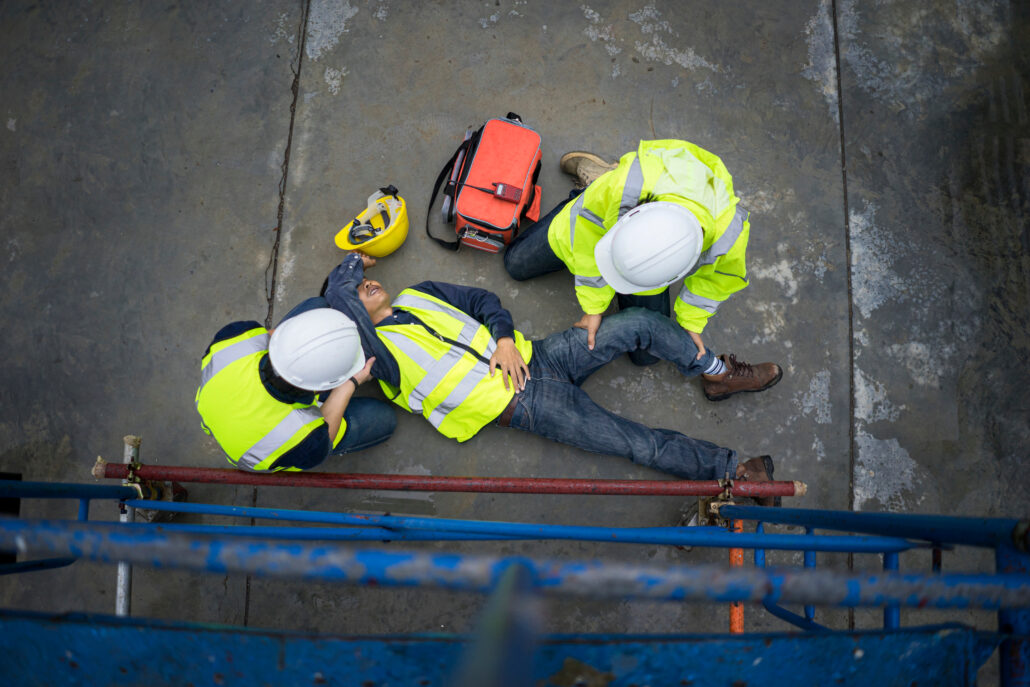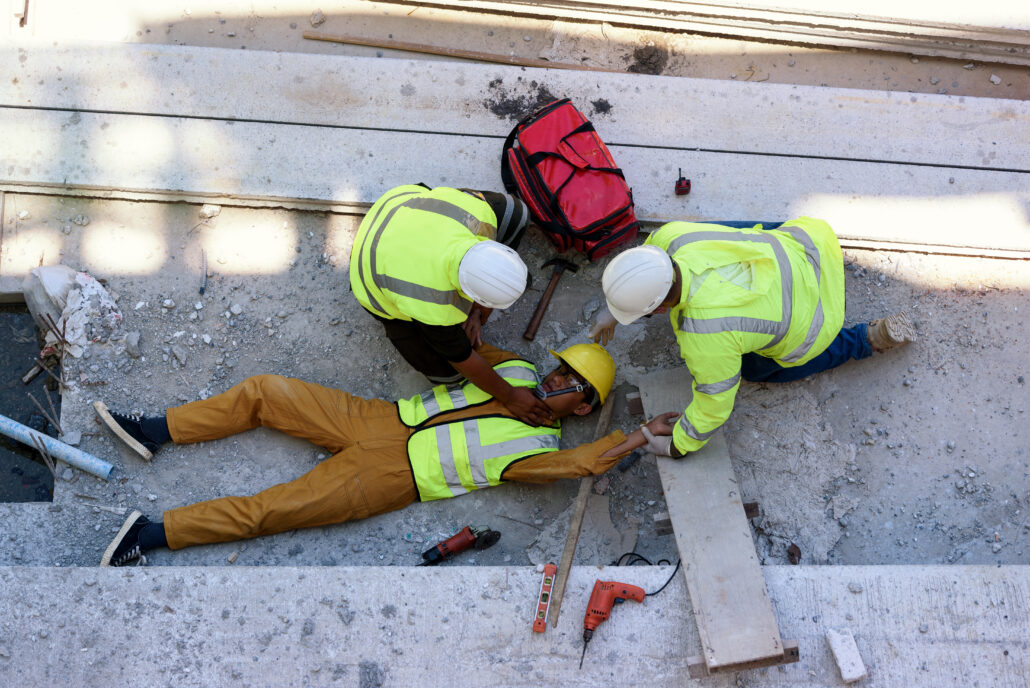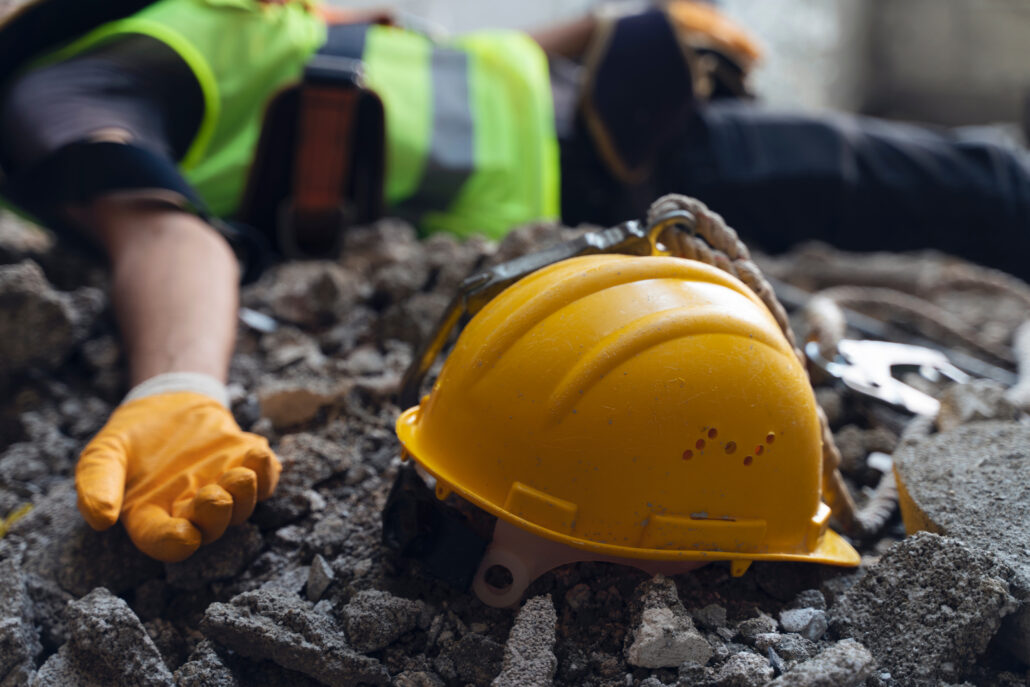Working in and around construction sites poses numerous risks and dangers. Despite a worker's utmost care, injuries can still occur. Construction accidents may result from employer negligence or the actions of third parties, impacting not only workers but also innocent bystanders in the vicinity.
In the event of an accident, whether on the job or otherwise, it's crucial to seek guidance from an experienced Bronx construction accident attorney. Understanding your legal rights is essential, and you may be entitled to compensation beyond what workers' compensation provides. Consulting with an attorney allows you to explore your rights and pursue the compensation you rightfully deserve.
Falls: The Most Common Cause of Injuries and Fatalities in U.S. Construction Accidents
Fall accidents commonly occur when workers fall from scaffolding, ladders, roofs, chimneys, and other elevated structures typical in construction areas. Additionally, construction sites, often cluttered with extra materials, tools, and debris, present additional tripping hazards. Slippery surfaces contribute to slip and fall incidents as well.

The extent of injuries resulting from falls varies based on factors such as the height of the fall and the circumstances surrounding it. Safety equipment can sometimes mitigate the impact, but in the absence of such precautions, injuries tend to be more severe, occasionally resulting in fatalities.
With approximately 11.4 million workers engaged in construction annually, marking a 25 percent increase in the last decade, falls remain the leading cause of work-related deaths in the industry. Accounting for 36.4 percent of total fatalities in construction, falls are a pervasive and critical concern, with 401 out of 991 reported construction fatalities in a recent year attributed to falls from elevated surfaces.
Falls constitute the primary category in the "fatal four" construction accident types. The fatal four include four common accidents known for causing severe injuries and fatalities on construction sites:
- Falling
- Electrocution
- Getting caught in equipment or machinery
- Being struck by an object
Types of Workplace Falls
- Falls on a Single Level: Falls occurring on a single working level are termed "slips and falls" or sometimes "slips and trips." Trips may arise from uneven footways, curved surfaces, or obstructions by fixtures or equipment. Slips can happen due to materials on the footway, like ice or grease, and improper footwear or mismatched footwear tread with the footway can contribute to slips.
- Falls to a Lower Level: Most workplace fatalities and serious fall-related injuries result from falls from an elevated level to a lower level. Examples include workers falling from mezzanines or the tops of vehicles. Occupational Safety and Health Administration (OSHA) regulations mandate employers to provide fall protection for workers in any general industry setting where a worker may fall 4 feet or more to a lower level.
- Swing Falls: Swing falls, while falling into the category of a fall to a lower level, have unique characteristics. These occur when a worker falls from an elevated platform while attached to a fall arrest system, and the system's attachment point is not directly above the worker's head. The lanyard's angle during a free fall causes the worker to swing back toward the attachment point. Although this swinging motion may not be an issue if the worker falls into an open space, it becomes problematic when working on top of an object, leading to inevitable contact during the swing. Swing falls are common in industrial settings, such as aircraft manufacturing or maintenance. They can result in fatality, serious injury, or significant equipment damage.
The Economic Impact of Workplace Falls
Workplace falls, particularly those associated with construction accidents, impose financial burdens on employers, employees, and society as a whole. Medical costs and workers' compensation benefits accumulate to an estimated $70 billion annually in the United States. Employers bear a substantial financial load, averaging nearly one billion dollars per week in direct workers' compensation costs, including:
- Income replacement through workers' compensation
- Medical expenses
- Legal services
Beyond these direct costs, there are indirect financial repercussions, including:
- Worker downtime
- Training replacement employees
- Accident investigation
- Implementation of corrective measures
- Lost productivity
- Repairs to damaged equipment
Given the significant financial implications of workplace fall injuries, employers and insurance companies often pose challenges to employees seeking approval for workers' compensation benefits or pursuing successful personal injury claims. If you encounter such difficulties, consulting with an experienced construction accident lawyer is essential.
Other Common Serious Construction Accidents
Various types of construction accidents pose significant risks, potentially resulting in severe or fatal injuries for both workers and bystanders, including the following:

Excavation Hazards
Dug-out areas beneath the ground or sidewalks have the potential to collapse suddenly, causing harm to individuals both underneath and above the excavation. Trench collapses offer no warning, leaving workers and pedestrians vulnerable to injuries.
Falling Materials
Working on scaffolding or elevated structures introduces the risk of tools, equipment, and building materials falling from above. These objects can cause severe or fatal injuries if they land on or near individuals walking or standing below.
Equipment and Machinery Failures
Mechanical failures in power tools or equipment, ranging from hand-held drills to larger machinery like forklifts or backhoes, can lead to accidents. Malfunctions or slipping out of gear pose particular hazards, especially with larger equipment.
Structural Failures
Temporary structures such as fences, sheds, scaffolding, and others may collapse, causing harm to anyone on or near them. Incorrect installation or using defective materials can contribute to structural failures, increasing the risk of injuries.
Crush Injuries - Between and Backovers
Construction workers face the potential danger of being run over by large trucks maneuvering on construction sites. In addition, there is a risk of workers being crushed between walls or concrete structures and large vehicles.
Explosions and Fires
Construction sites will inherently have hazards, including flammable chemicals, leaking pipes, and exposed wiring. Although explosions and fires are not as frequent as other causes of construction injuries, they often lead to severe or fatal consequences when they occur.
Electrocution
Construction work often involves proximity to power lines and sources. Accidental contact with power lines by machinery or equipment is a common occurrence. Despite worksite precautions and warning signs, electrocution incidents still happen on construction sites, posing a significant risk of fatality.
Repetitive Motion Injuries
While not classified as accidents, repetitive motion can result in injuries similar to those caused by accidents on construction sites. Construction workers often perform repetitive tasks daily, leading to conditions such as carpal tunnel syndrome and tennis elbow. These injuries, affecting muscles, nerves, ligaments, and tendons, can be temporary or permanent and result from repeated specific motions.
Causes Behind Construction Accidents and Injuries
Construction accidents can typically be attributed to one or more indicators of negligence. These signs include the following:
- Inadequate fall protection measures for workers on elevated structures like scaffolding
- Lack of safeguards against falling objects
- Tripping hazards arising from construction materials and debris left in pathways
- Absence of guards or protective measures on power tools
- Presence of hazardous equipment and machinery
- Failure to implement safety precautions while working near power lines
- Insufficient protection for workers in trenches
- Lack of safety training or proper guidance on equipment usage.
- Other hazardous conditions on the property
Understanding Workers' Compensation
Workers' compensation is a mandatory insurance coverage provided by states that offers specific benefits to employees injured while performing their job duties. This system ensures injured employees receive medical care, compensation for medical expenses, and payments for lost income.

No matter who is liable for their injuries, workers are generally entitled to these benefits in every state, as the workers' compensation system operates on a no-fault basis. Employees can access these benefits even if they have pre-existing conditions aggravated by work or the injury occurred outside the workplace.
However, specific injuries are typically excluded from eligibility for workers' compensation benefits, including:
- Self-inflicted injuries (including those resulting from an employee initiating a fight)
- Injuries sustained while an employee was committing a crime
- Injuries suffered when an employee was not at work or performing their job
- Injuries resulting from a worker's conduct that violated company policy
If you have uncertainties about whether your specific circumstances qualify for workers' compensation benefits, it's advisable to consult an experienced construction accident attorney promptly after a construction accident occurs.
Types of Construction Injuries
Neglecting safety measures on and around construction sites can have overwhelming consequences, resulting in various life-threatening injuries, such as:
- Traumatic brain injury (TBI)
- Spinal cord injuries (SCI) leading to paraplegia or quadriplegia
- Burns
- Electrocution
- Eye injuries causing vision impairment or blindness
- Deafness
- Broken bones
- Knee and ankle injuries
- Neck, shoulder, or back injuries
- Illnesses from exposure to toxic chemicals
- Post-Traumatic Stress Disorder (PTSD)
- Scarring
- Disfigurement
- Limb injuries requiring amputation
- Deep cuts or lacerations
- Toxic exposure to chemicals like welding fumes
These injuries can result in life-altering disabilities, such as paralysis or cognitive impairment. Survivors often face years of expensive medical care, physical therapy, surgeries, and additional measures to regain even a fraction of their former functionality. The necessary equipment and medications further contribute to the already substantial costs associated with these injuries.
Can You Receive Compensation for Pain and Suffering in Workers' Compensation Claims?
Receiving compensation for pain and suffering in a workers' compensation claim is generally not going to happen due to the no-fault liability nature of the system. Workers ' compensation typically doesn't cover pain and suffering even if your injuries result from another party's negligence.
However, suppose the liable party is someone other than your employer or is associated with a different entity. In that case, you may have grounds for a third-party civil liability claim to seek damages, including compensation for pain and suffering. To understand your rights in such cases, consulting with a construction accident attorney is crucial.
Construction Accident Personal Injury Claims
Beyond workers' compensation claims, individuals who experience injuries in construction accidents retain the right to pursue personal injury claims under civil law. However, if covered by workers' comp, they cannot file a personal injury claim against their employer. Those not covered by workers' comp or individuals injured due to third-party liability maintain the option to file a personal injury claim. If a construction accident injures someone other than a worker, that party also possesses the right to pursue a personal injury claim against the liable party.
Third-party negligence claims related to construction accidents usually involve:
- Contract companies or workers causing an accident
- Vehicle or equipment manufacturers with faulty equipment
- Injured parties who aren't employees or workers
These claims are rooted in negligence, making it crucial to establish fault. To prove fault, your construction accident lawyer must demonstrate the following elements of negligence:
- Another person or party owed you a duty of care (e.g., equipment manufacturers providing safety warnings)
- The person or party breached their duty to you
- Their breach directly resulted in your injuries
- Your injuries resulted in damages
Upon hiring a construction lawyer, they will determine liability for your injuries. In some instances, multiple parties may be liable, enhancing the potential compensation you can receive. Your attorney will send a formal demand for compensation to the responsible parties, outlining their breach of duty and your injuries. This initiates negotiations for a settlement. If there is never a fair settlement offer, you may choose to have your attorney pursue your case in civil court.
Seeking Damages in a Construction Accident Injury Case
While each personal injury case is unique, victims of construction accidents generally have the right to pursue compensation in a civil lawsuit for various damages, including:
- Limitations and disabilities
- Pain and suffering
- Disfigurement and scarring
- Past and future medical expenses
- Past and future income loss
- Lost earning capacity for the future
Additionally, punitive damages may be available if the court deems that the responsible party acted exceptionally recklessly or carelessly. Unlike other damages that compensate the victim, punitive damages aim to punish the wrongdoer and deter similar actions in the future.

Contact a Construction Accident Attorney Now
If you or a family member recently suffered injuries in a construction accident, you may be eligible for compensation through workers' compensation, a civil liability claim, or both. To determine your rights and assess the potential value of your case, consult an experienced construction accident attorney. State laws limit the time frame for pursuing injury claims after a construction accident, highlighting the importance of seeking legal assistance promptly.



